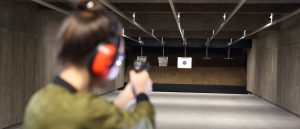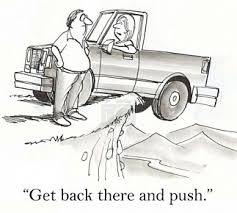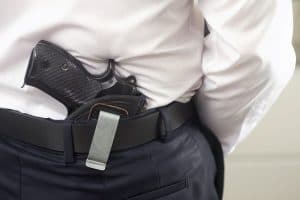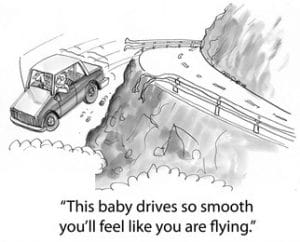Situational awareness, sharp perception, and understanding of the environment are things that are crucial for successful behavior and comprehension at risk in 2023 – in theory and in practice. We will share our knowledge on how to develop the right skill set to combat any situation and arrive in safety using your cognitive skills.
Situational awareness is what sets you apart from failing to survive in an emergency life-or-death situation. If you want to know what situational awareness is and what skills can make you almost invincible, read this article.
Have you ever wondered what separates survivors from, well, the rest of the people, those who just would not make it?
A set of survival skills, for sure. Owning emergency tools and self-defense weapons. Knowing how to use all the gear to survive. But there’s something else. Something more to what makes one a survivor.
We are talking about situational awareness. What situational awareness is, how to develop it in yourself, and is it even possible – we will answer these questions in this article.
What is Situational Awareness?
Remember that “Friends” episode where Ross claimed to possess “unagi” – a sort of enlightened state of mind that meant constant awareness of whatever came his way? Well, in a nutshell, you can say that it’s what Situational Awareness is about. Although, things go a little bit deeper and even more scientific than that.
Getting a grasp on the meaning of situational awareness (or just SA) is easy. Situational awareness means realizing where you are at the moment and what you should expect according to the knowledge of the situation you’re in. Simply put, it’s the state of knowing what is going on around you.
You can breakdown situational awareness into several basic aspects:
- Being able to asset the risks and dangers of the situation;
- Being able to realize how bad the situation is;
- Knowing the means, you can use to overcome the situation;
- Being aware of the possible barriers you may come across;
- Knowing all the possible ways out;
- Taking into account all the factors that may come along the way.
The list is not complete, though. But these are the basic aspects of what situational awareness means. All these factors are used in decision making, and each of them can make a difference in an emergency. Proper situation assessment is crucial. Especially when it comes down to survival, without it, you may have no chances.
They say getting lost is easy. But guess what, with not enough situational awareness, you won’t even be able to do it because that’s what it takes – being fully aware of what you’re doing, how you’re doing it, and what can stand in your way. Need an example? Here you are.
A Real-life Example of Situational Awareness

Picture this, a man is driving down a remote desert roadway, and suddenly the car breaks down. That’s it—end of the line. The engine’s dead, and the car won’t move an inch forward. The roadway’s traffic situation is much to be desired – the roadway looks desolate, so there is no help coming.
The man gets out and looks around to find that there’s a road sign. And the sign reads the next gas & serving station – 15 miles.
So the man begins doing some math: “My average speed on foot is some four miles an hour. So if I get going right now, I will reach the station in just about five hours or so.”
Was that a good decision? Not quite. According to situational awareness, this person did a reasonable situational assessment in terms of time and speed. But still, there was a mistake that may have its toll on the traveler.
Although the traveler knows that he’s strong enough to go the full distance, there is one thing he did not take into account – the environment. And that’s where his SA lets him down.
It all comes down to neglecting environments when people are trying to go the proper situation assessment. Decision making should not only be based upon a person’s abilities. All the factors must be considered. How hot or cold is it? Is the person properly dressed? Does the person have water or food? Truth be told, there are multiple situational elements that a person must take note of during decision making.
Getting back to our traveler, his mistake was that he did not take the environment’s elements into account. And in this given situation, the temperature is too high, and there is no shadow along the way, and the traveler has no water.
It’s a Level 1 SA mistake – a wrong or incomplete perception of the current situation’s elements. And when this mistake takes place, it automatically affects all the future endeavors of a person. If situational perception is wrong, it compromises comprehension, and this, in its turn, will lead to projection errors. (More on these SA levels later, though. So don’t get confused and try to stay focused on the SA example in question.)
So, our traveler missed on just a few factors which put the man in danger. Because as soon as he found himself stranded in the middle of nowhere, the invisible clock started a countdown – a countdown to the man’s demise or salvation.
Every single thing the person missed out on – water, temperature, shade – would eventually put him at risk of not making it to the station. So it is fair enough to say that the traveler did not show a high level of situational awareness. Instead, what he did was a proper judgment of the situation. And those things are just not the same.
If you made a proper judgment of the current situation you’re in, it does not you will definitely find a way to figure out how to get out of a problem. A judgment is just a start. You really need to – through thoughtful decision making – try to find the solution to the problem.
You will have to do your best to make a long-term projection of the situation where your decisions and actions affect the future events leading you from A to B, and from B to D, and so on. Or, should you happen to make a mistake, you will not get anywhere, just like the traveler from our example.
However, you should remember that sometimes you don’t need to do a lot of decision making. With a high level of situation awareness, you can make a proper situation assessment and find out that almost all that you need is already there in front of you. The situation itself has given you everything you can use to make the best of it. But again, with poor SA skills, you may not see it.
Do You Have The Awareness In You?
So how can you tell that you have situational awareness?

One of the best ways to approach this question is to imaging playing poker. Have you ever played poker? So imagine that you are now. And after having played for half an hour, you still don’t seem to know what’s going on around you. Has that ever happened to you? Well, in real life, that’s what it means not to have situational awareness. It’s like playing poker and not knowing what is going down.
But life is not a game. And having SA is very important.
Having no situational awareness is like living without seeing and things as they are in reality. SA means the proper perception of reality. SA means the comprehension of reality and the effects it has upon you. SA means being able to make a long term projection of future events that will get you out of the situation you’re in.
But how can you tell that you have situational awareness in you?
One of the best ways to find that out is to find someone you can truly trust. Find a person whose decision-making abilities you consider high-class, someone who you think is wise and practical. Stick to that person and follow their ideas and thoughts on many different subjects. Such as politics & economy, sports & technology, mass media & world events. Does this person make sense? Is that person good at predicting near-future events according to present facts and knowledge? And while you may disagree with the man on everything, the thing here is to understand how they think, analyze and approach problems. If you do, then you probably have situational awareness.
Cherish it in you. And do your best to develop a sense of situational awareness.
Can You Be Having Too Much of Situational Awareness?
Is there even such a thing as too much SA? Well, sort of. Some would call it paranoia.

You see, the world is a scary and dangerous place. And you don’t even have to come outside to be risking your health or your very life. There are tons of human factors out there that may lead to terrible disasters affecting your home. A plane can crash on your house like it did in the “Donnie Darko” movie. Or there’s a gas leak that would lift the whole building in the air. Or if not for human factors, natural forces may come into play. Floods, storms, and fires are the first ones that come to mind. How to live knowing all that?
Too much situational awareness may result in permanent anticipation of disasters, assaults, and such. Somewhere there is a skinny line that separates healthy SA from being plain paranoid.
As of today, many women believe that men are dangerous. They think that every single glance a man gives them is indeed a glance full of lust and sexual desire and that no man can ever resist this desire. This model of thinking is nowhere near a healthy SA but a source of permanent nervous strain and fear.
When in a regular day-to-day situation you fear simple human communication, you know there is something wrong with the way you look at people and at the world around you. If you tend to make bleak and dreadful mental models of future effects every time you leave your house, you know that this is just too much situational awareness.
So try to keep things balanced and remember that situational awareness is not about being anxious and paranoid about what may or may not happen. SA is about knowing what is going on around you and being positively sure that you will make the best out of a situation should things go down. Situational awareness is being able to make a proper perception of reality and make mental models of what you know is going to happen along the way.
The bottom line is SA is being in control of yourself and keeping control of the situation as much as it is possible.
Situational Awareness of the People Around You
Situation awareness and situation assessment skills are something you would also want your partner to have if you happen to travel or work with someone who has little to no knowledge of a current situation. Doesn’t know how to give a proper assessment of what’s going on around you, it may get you in a lot of trouble.
If your partner lacks situational awareness, they will be of no help to you in emergency events. And even worse, people with not situations assessment skills may get themselves, and those around them killed during life-or-death events.
But how do you know that your partner lacks situational awareness? More on this – in the next section of our SA guide.
People With Next to None Situational Awareness
Since situational awareness has a great lot to do with decision making, the best way to find out if someone has poor or no SA is their inadequate decisions.
We bet you’ve met people of that type before. Sometimes they seem just not to get it. These people are often hard to get on with since they have their own way of thinking. You may even catch yourself wondering do they see things the way you see them.
One of the best ways to tell if a person lacks situational awareness is paying attention to their verbal communication skills. People with poor to no situation awareness tend to bad with words. The way one speaks reflects the way one thinks.
A person with poor logical skills would be difficult to communicate with.
Suppose you are finding it hard to understand what one is saying to you. If you, as they say, are not on the same page, this would probably mean that the person lacks logical skills and, as a result, would most likely lack situational awareness.
Since situation awareness requires one to think in a strictly logical way to make a proper situation assessment, gather relevant information, properly perceive elements in the environment (as well as time and space) for adequate comprehension of their meaning and precise projection of their status in the near future.
People with poor SA are also usually unfocused. And saying focused is crucial if you want to develop a high level of situational awareness in yourself. Being focused means paying attention to what is going on around you. It means keeping track of events, people, and other elements. Just what you do with situation assessment when you perceive the elements in the environment and then proceed with comprehension of their meaning and projection of their status in the near future. You know, just regular SA stuff.
But none of the above is possible if you’re unfocused.
Quite often, if a person lacks focus, their eyes would aimlessly drift with no particular aim in sight. Sometimes it just seems like they are staring into space. However, not always such a look proves the lack of SA.
There are cases when such an “absent” look may indicate thoughtfulness. One may look spaced out while, in reality, some set of practical ideas are being generated inside. And in just a few moments, a person would come up with a brilliant solution to the problem. That thing is called contemplativeness.
So it is essential to know the difference between being unfocused and the state of thoughtful contemplation:
- The latter is a way of thinking, while the former is a way to bad ideas.
Famous Last Words: “That Was A Bad Idea”
But are bad ideas always a result of the lack of situational awareness? Not quite.

What is a bad idea, anyway? Does it originate from poor judgment or inadequate prediction? Or is it a result of a total lack of knowing what is going around in the first place?
The truth is even people with a high level of situational awareness may make mistakes and come up with bad ideas. Most often, it happens because of poor judgment. But ideas based on poor judgment do not always lead to a disaster. With a high enough level of situational awareness in dynamic systems, it is possible to adapt to a changing situation and apply a different approach to prevent failure.
But if one does not seem to understand a situation as a whole, if one tends to ignore the roots of a problem, thus misunderstanding it completely, this will eventually result in a failure. It is imperative to be aware of the entire context of a problem to make adequate decisions in the current situation. That’s what situational awareness is about.
One may make a mistake along the way because of poor judgment made in a compressed volume of time, but this will not necessarily mean total failure. Whereas being unaware of what is really going on around will lead to the chain of bad ideas that will result in inadequate mental models and poor long-term projection.
So situation awareness is about fully understanding the problem, being aware of its context, and being able to gather and process all relevant information even in a compressed volume of time.
Levels of SA (according to Endsley M. R.)
Let’s digress a bit and pay attention to the fact that what we call situational awareness in our day-to-day living is originally a military term.
The term SA was widely used in the US Air Force in the second half of the twentieth century. Before it became subject to human factors researchers in the nineties, SA was a system the US pilots utilized in order to survive during aerial battles.
As you can imagine, operating an aircraft takes a lot of analyzing and projecting. There a lot of decision-making under strict time and space conditions. A pilot must make decisions in the nick of time. Of course, it all requires an adequate planning process, which is just impossible without proper situation assessment.
No wonder that it was an Air Force scientist to become one of the most notable situational awareness researchers. In 1995, with her book “Toward, a theory of situation awareness in dynamic systems. Human Factors” Endsley M. R. began the series of scientific publications on the subject of situational awareness and human factors researches.
According to Endsley M. R., SA consists of three levels:
- Level 1 – Perception;
- Level 2 – Comprehension;
- Level 3 – Projection.
SA Level 1: Perception
Level 1 (or step 1) of situational awareness, according to Endsley M. R., is perception meaning a person must properly perceive facts, status, attributes, and dynamics of the environment.
As a basic level of SA, Perception of the elements helps an observer to gather all relevant information about the situation: such as people, objects, events, time and space, factors of the environment, as well as the relevant information about the status of the said elements.
SA Level 2: Comprehension
Comprehension (Level 2) is the process of integrating the gathered information. It then helps a person to get a clear view of a situation and its prospects through making a large scale interpretation of the event. This global assessment then lets the person plan their goals within the context of the problem.
SA Level 3: Projection
Level 3, Projection, is about being able to plan (or project) the future actions and create mental models for events and environmental factors. Such a projection of their status in the near future will help the person to analyze the possible result of their decisions and actions.
All three levels – Perception, Comprehension, and Projection – make for a complete situational awareness and are viewed as a decision-making process that can minimize human error risks.
However, it is plain to see that Endsley M. R. did not make something originally new when she introduced the three levels of situational awareness. What Mica Endsley did was just constructing plain logical principles into a model. And if you look at the SA levels, logic is what you will see. A logical way of thinking, should we choose to be more precise.
Level 1, Level 2, and Lever 3 just describe the way an ordinary person would think should they need to solve a problem. The way you do it is:
- You get a general perception of what you have to deal with;
- Then you try to figure out how you want to handle the problem, i.e., you comprehend it;
- And finally, you try to predict the effects of your efforts, i.e., you project a long-term chain of events using a mental model (a projection) of your near-future goals.
So with that being said, situational awareness can be regarded as a standardized model of decision-making principles put together in a cohesive system rather than a certain skill.
Situational Awareness Today
But today, SA has long gone far beyond the military or scientific field of use. People utilize SA in many different aspects of their everyday lives.
These days, you don’t have to be an Air Force pilot having to make rapid decisions in a compressed volume of time to utilize the principle of situational awareness.
Throughout the years, SA has met extensive use in a great variety of professions where it is essential to take human factors into account, meaning – almost everywhere. Proper situation awareness and comprehension of time and space, for instance, is vital for an air traffic controller. Situational awareness is also broadly used in medical professions where decision-making, perception of the elements of a situation, and precise projection of their status in the near future is part of the day-to-day routine.
When applied in teamwork, SA is the most effective when each of the team members shows a high-level situational awareness. Team members will have to work as separate individuals applying the principles of SA decision making. And the higher each individual team member’s level of situational awareness, the better the results of the fellow team members and the team as a whole.
But apart from different kinds of professions and jobs, SA is what all of us apply, even if we have no idea that we do. Here’s our point.
As we said earlier, SA is not a set of skills rather than a collection of decision-making principles put together into an easy-to-use model. Basically, situational awareness is a set of methods that we use when we need to make decisions on practically anything.
Earlier, we gave you the example of SA in a roadside emergency. Then, we said about how it was used by pilots and air traffic controllers. But you don’t have to jump into an aircraft to see how the SA approach works. Now, we’ll try to give you a more peaceful example of how you can or actually use situational awareness in your daily chores.
Let’s say you need to go shopping at a local grocery store. What will you do? Well, you have probably already checked on your fridge to see what products you lack. That is, actually, the first step. Then you will need to make a shopping list. While doing it, you will have to make sure you have enough money on you to buy all you need. In another case, you will have to leave some products off. Your next step is to decide if you want to replace products that you’re used to if there will be none in the grocery shop. And, if that’s your case, you may also want to do some time management calculations. And here it is – situational awareness.
It may seem a kind of a stretch, except that it’s not. You see, the aforementioned steps are what the SA Levels of Endsley’s model are:
- You check on your fridge – that is Level 1, perception of the elements. The elements here are your fridge and the lack of products you need every day.
- You make a list and count your money – that is Level 2, comprehension of the elements. After you have gathered the relevant information, you need to process it or comprehend it in order to move on with your goals.
- And finally, there comes Level 3 – a projection of a mental model of a shopping process. You will have to consider if anything should go wrong and you won’t find some of the products on your list, and you will have to replace them, or how much time you will spend on shopping.
So if we put the whole decision-making chain into a general consecutive structure, it will go like this:
- First comes the perception of the elements followed by the comprehension of their meaning and the projection of their status in the near future;
- And everything is properly done, you achieve your goal. (In this case, you come back home with a bag full of groceries).
However, situational awareness is something you will use not only to buy groceries. There is a thing SA is essential for. And that thing is what interests us the most. It is survival.
Situational Awareness & Survival
The connection between situational awareness and survival skills is obvious. There’s just no way you will become a successful prepper if you don’t have situational awareness.

For a prepper, having a high level of situation awareness is a no-brainer. Situation assessment skills, mental model projecting, being able to figure out the easiest way out of a problem, and knowing how to minimize human factors to avoid failure are all crucial for survival.
One of the ways to show the importance of situational awareness for survivalists is through building an emergency shelter. There is a ton of things to consider when you decide to build a survival retreat. And situational awareness is what will be of great advantage in this endeavor.
A prepper will have to go through each SA level when:
- Considering time and space factors;
- Considering environmental factors;
- Making up survival gear list;
- Purchasing building materials;
- Etc.
A prepper will have to create multiple mental models considering all the if-then-else prospects for the near future and long-term anticipations.
As a matter of fact, SA Level 3 (Projection) is what preppers use quite often.
When it comes to constant awareness and survival preparedness, creating adequate and various mental models is among the best skills for preppers. A survivalist will have to create a mental model for each possible situation in the future to avoid failure.
Another thing that is situation awareness-related is taking care of human factors that may compromise the prospects for survival. And for that matter, should preppers choose to work collectively, team situational awareness becomes crucial.
It is strongly advised to pick companions thoroughly and pay a great amount of attention to individual qualities and situation awareness level of survival team members. When working in a team, you will want to be a hundred percent sure your companions will have your back covered. A prepper team with a low level of situational awareness has little to no chance to make it through the hardships of a survival situation.
A low level of situational awareness may and will be a source of possible menace to the whole endeavor.
But situational awareness is not only good for emergencies, disasters, or downright worst-case scenario situations. You may, and you need to apply situational awareness principles in all or sort of everyday situations.
Situational Awareness: From an Individual to a Team
Since we mentioned the role of situational awareness in teamwork twice – in the previous two sections of our guide – before we move on to tell you about how one can learn situation awareness, let’s make a short stop and dwell a bit deeper into the topic of team situational awareness.
It is just obvious that people tend to work collectively. There are fields of human enterprise that require teamwork, where team members work as an organized mechanism achieving a particular goal. Therefore, it leads us to bring up the question of what situational awareness in teamwork is and how it works compared to the situational awareness of an individual.
To answer this question, we need first to give a definition of a team since a team is not just a gathering of individuals.
A team is a company of two or more individuals who choose to act in an adaptive and mutually respectful manner in pursue of a mutual goal. Each of the team members has taken upon a particular role and responsibilities it implies and performs their functions accordingly until the goal is achieved.
To have an idea of a team according to the definition above, imagine a shooting crew making a film, or a musical band recording an album, or a group of scientists working on a scientific project. Each case is an example of team and teamwork requiring a certain amount of team members competence, expertise, and situational awareness.
Situation Awareness in Teams
According to Mica Endsley, the team situational awareness reflects how deeply each teammate is involved in the process in connection with the level of individual SA, which, eventually, will have its results upon the working process. Plainly said, team situational awareness is what determines the future success or failure of the whole endeavor. The way the process goes and the way it ends – whether successfully or quite the opposite – fully depends on the successful achievements and failures of each member of the team.
In case when someone from the team has a low level of situation awareness – perception-wise, or reflected in poor comprehension of the environment, the meaning, and the projection of a future status – it is plain to figure out that it may lead to a human error and may have a negative effect on the overall process compromising the work of the team.
Following the idea, it is important to emphasize that each member of the team must have a high level of individual situation awareness in connection with their personal responsibilities needed to perform their in-team duties. If any member of the team is aware of the facts or factors of the environment that are unknown to the member who needs this information, the whole teamwork gets compromised.
To work as an optimized mechanism, a team must be comprised of individuals working strictly in the field of their own responsibilities that will become subgoals to the main goal of the team. Eventually, all the subgoals will come together in the overall achievement. It is essential to keep in mind that although members of a team are working individually, they are not working separately. Their subgoals may come across each other. The same goes for their individual situational awareness requirements, which also may overlap from time to time.
The latter case is known by the term shared situation awareness.
What this means is in a case when SA requirements of different teammates come across each other, they become relevant to more than just one team member. It is, in this case, we deal with the aforementioned shared situation awareness.
Actually, share situation awareness is a common feature of every teamwork, since different teammates SA factors do meet quite often. If that happens in a badly coordinated team, members with shared situation awareness will act counter-productively, having assessed the situation differently. Whereas in properly organized teamwork, shared situational awareness makes for proper results and overall success.
Although, we must point out that not every single bit of information should be passed on from one team member to the other if the two are sharing the same situation awareness requirements. Giving team partners too much information may result in information overload and get teammates confused. In an overloaded information flow, it is difficult to spot the relevant bits of incoming data. This slows down the working process and may jeopardize the whole endeavor.
Teamwork Situation Awareness Structure
So what does a team SA workflow consists of?
It divides into four factors:
1) Teamwork SA requirements. This determines the amount of relevant information to be shared. It includes factors of the environment, their meaning, and the projection of future statuses (the ones that would otherwise stay unknown to the team partners).
2) Teamwork SA devices. These are the means used to communicate and share information. The means include verbal and non-verbal communication, a shared environment, shared displays. Not every teamwork needs (or has in disposal) such devices as a shared environment or displays, which makes verbal communication the basic means of interaction.
3) Teamwork SA mechanisms. Among these mechanisms are, for example, shared mental models used to ensure similar interpretation of the shared information and provide adequate predictions for the planned actions.
4) Teamwork SA processes. This indicates the amount of collaborative work within a team, including sharing situation awareness data, cross-checking, defining task priorities, coordinating, and planning.
So if we look at this model in a less scientific way, we will see a plain method of collective work process utilized in countless different aspects of our lives. This teamwork situational awareness model makes for a great sum-up of how an organized group of people should function.
This is especially important if we take a look back upon the survival section of our SA guide. Since survival often takes collective efforts, it is crucial to know how to organize and optimize proper teamwork creating a positive environment for a productive working process.
To know more about teamwork SA, feel free to read the works of Mica Endsley and her fellow situational awareness researchers.
Can You Learn Situational Awareness?
So situational awareness is a cool thing to have, right? But not everyone has it. That much is true. So can one learn situational awareness? And if that is possible, how does one learn it? A few ideas on that, in the final section of our situation awareness guide.
Since situation awareness is a method comprising certain skills, to learn situation awareness is to develop and improve the said skill in yourself. For some, it may be harder. Some would find it quite easy. The thing here is that some people naturally do better than others in terms of understanding and seeing things for what they really are.
This type of people will easily adapt to a changing situation, and they easily spot certain patterns in the environment and human behavior. This is a sort of gift. And as with all gifts, you either have it, or you don’t.
But don’t be quick to get desperate and lose your hope in learning situation awareness. Like we said, gifted or not, you CAN find your way of becoming aware and knowing what is going on around you at all times.
The trick here is to work on your skills and behavior habits in three directions:
- Paying attention to details;
- Training your working memory;
- Staying up-to-date with what’s going on around;
Pay Attention to Details
This is just what it is. Awareness is not just a state, and it is the result of your own efforts. So the best place to start is to build the basis for your future situation awareness.
Try to become more attentive. Pay attention to whatever is around you: people, objects, environments. Pay attention to what people look like, how they are dress, how many people are there around you. Remember that dialogue in the first Bourne movie, where the titular character tells his partner how he is able to tell all about the cafe they are in and its visitors? Well, that’s pretty much what we’re talking about.
Being attentive is not just some sort of hereditary feature you received from your parents. It’s also about training yourself. Develop that habit in you. The world is constantly changing, so working on your attention to the details around you is a good way to start learning situation awareness in dynamic systems of an ever-changing environment.
Train Your Working Memory
Improving working memory is another thing you should work on to develop a high level of situational awareness. And a working memory skill goes hand-in-hand with attentiveness.
What is working memory?
Working memory (sometimes arguably referred to as short-term memory) is the ability of your mind to memorize items and hold information on them for a limited volume of time. The limited capabilities of working memory can negatively affect your situation awareness level. If you are not able to hold enough information in your memory, this would eventually result in failure. When assessing the situation and planning future actions, you may accidentally miss out on a detail or two just because you forgot them. And this will affect your decisions and the final result.
So it is crucial to work on working memory improvement.
There is enough information online on how to train working memory. So we encourage you to do your own research on the matter.
Be Aware of the World Around You

Last but least of what will help you improve your situational awareness in dynamic systems is staying up-to-date with the news. Information is the key to awareness, and the more you know, the more you are prepared for whatever may happen.
For this approach, anything goes – newspapers, TV, radio, and of course, the Internet. But as you’re zapping the channels or surfing on the web, keep in mind that the information you’re getting needs to be filtered.
Some facts can be taken out of context and exaggerated. Some news can turn out to be downright fake. Some are just half-truths and require personal research. Mass media is not only big business but also the means of propaganda. And there is a lot of it. Scaremongering journalists, socio-political alarmists, and such will try to affect the way you see the world.
For instance, they may tell you that the ice caps are melting away at a frantic pace, but at the same time, you will be displayed satellite photos showing quite the contrary – that ice is growing ever faster than it used to.
Or news would make you think that Trump and only Trump is the world’s biggest threat with nuclear mass destruction on his mind. Whereas, whatever you may be thinking about Trump, he is not the only thing you should be worried about.
And here’s another story: KKK, which is (as some would try to persuade you) an alarmingly major political influence within the US. As you may guess, this statement is a huge exaggeration. Ku-Klux-Klan is not as enormous as some sources may claim. In fact, there are only somewhat three thousand KKK members, which is a drop in the ocean compared to three hundred million Americans.
Unfortunately, today’s news reports are all politically biased, making it extremely hard to find the truth. Being that misled will not help you develop situational awareness. In fact, it is the surest way to failure.
So what should you do? The answer is to educate yourself.
Situational awareness means not only knowing facts but also and foremost being able to make adequate comprehension of their meaning. Proper interpretation of facts, as well as the elements in the environment, is crucial for situation awareness.
To be able, to tell the truth from lies, you will have to develop your own private BS-filter. And nothing helps better than constantly educating yourself. Learn as much as you can. Get useful knowledge in different fields like:
- Psychology and philosophy;
- Survival skills and firearms;
- Physiology;
- Computers;
- Politics and economic science;
- Etc.
The list could go and on, really. But to add one more thing is history. Because you know what they say: the one who does not remember the past is doomed to repeat it in the future. The more you know about what was, the better you can read into what’s happening today. After all, there is nothing new under the sun.
Conclusion
Situational awareness is a crucial skill to have. This method of decision making and projection is handy professionally and personally, as well. If you have situational awareness, you may be sure that no matter what comes your way, you will be able to react, adapt and make proper decisions in an everchanging environment.
However, it is impossible to cover all the aspects of such a complex topic as situational awareness in one article. So if you want to know more about situational awareness, we encourage you to do your personal research. A good place to start is Mica Endlsey’s book “Toward a theory of situation awareness in dynamic systems.”
FAQs
What Does Situational Awareness Mean?
To put it simply, situational awareness is the state of knowing what is going on around you. Originally used by military services and scientists, situation awareness has met extensive use among different sorts of people, as well as preppers.
Situation awareness is about the adequate perception of elements in the environment, comprehension of their meaning, and the projection of the future effects according to the processed information.
Situational awareness includes:
- Decision-making skills;
- Working memory;
- Situation assessment skills;
- Mental model construction;
- Acting in a compressed volume of time;
- Attention to details;
- Considering the context of a situation.
What are the Three Levels of Situational Awareness?
Situational awareness consists of three consecutive levels. Each level in the SA model is logically preceding the next one, and you can’t omit any of them. The levels are:
- Level 1 – Preception;
- Level 2 – Comprehension;
- Level 3 – Projection.
The Perception level involves gathering relevant information on the situation one is in (including, but not limited to) environmental factors, people and objects around, the contexts of the situation. Comprehension is the act of understanding the environmental factors meaning. And the Projection part is when one is trying to create a mental model of a possible future turn of events according to the decisions one is going to make.
How Do You Use Situational Awareness?
One can use situational awareness in a variety of cases, basically, everywhere. Situation awareness is great for planning actions in a compressed volume of time when rapid decision-making is crucial. Generally, one would use situational awareness to make the best of whatever situation they may wind up in. Using situation awareness means understanding the situation, perceiving elements of the environment within a volume of time and space, analyzing them, making a mental model for the future, and then proceeding with further actions.
Is Situational Awareness a Skill?
Situational Awareness is more of a systematic method than a skill. It is a logically built model of thinking and acting to create goals and go for them. Situation awareness is an approach to solving problems. It is based on knowing what is going on around, what obstacles may come in the way, and how to behave under dynamic situation conditions. More on situation awareness read Dr. Endlsey’s book “Toward a Theory of Situation Awareness in Dynamic Systems.”



